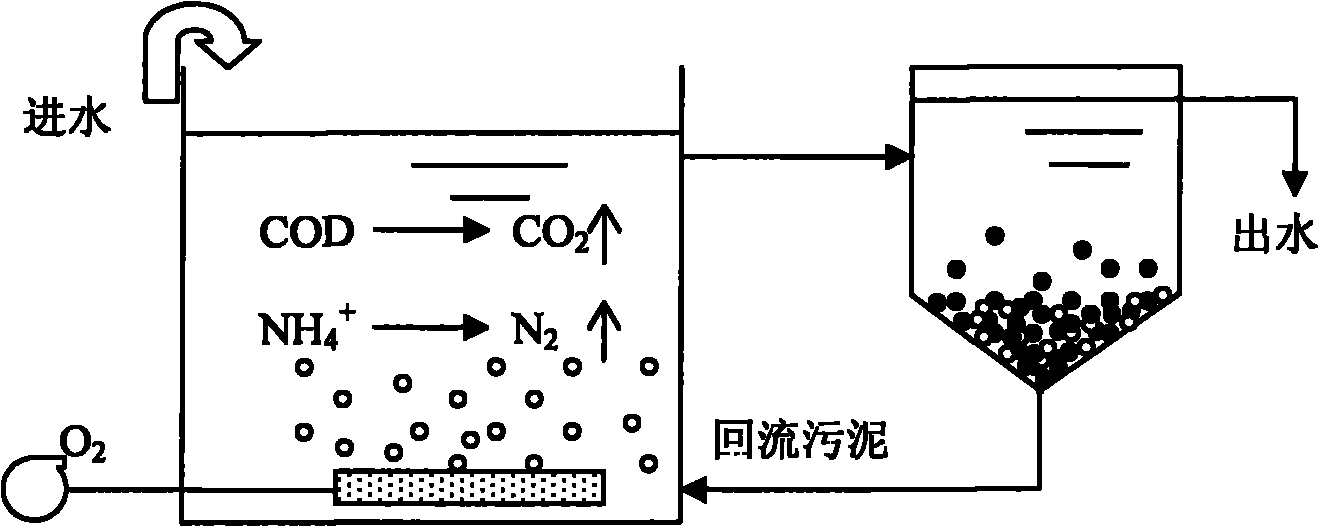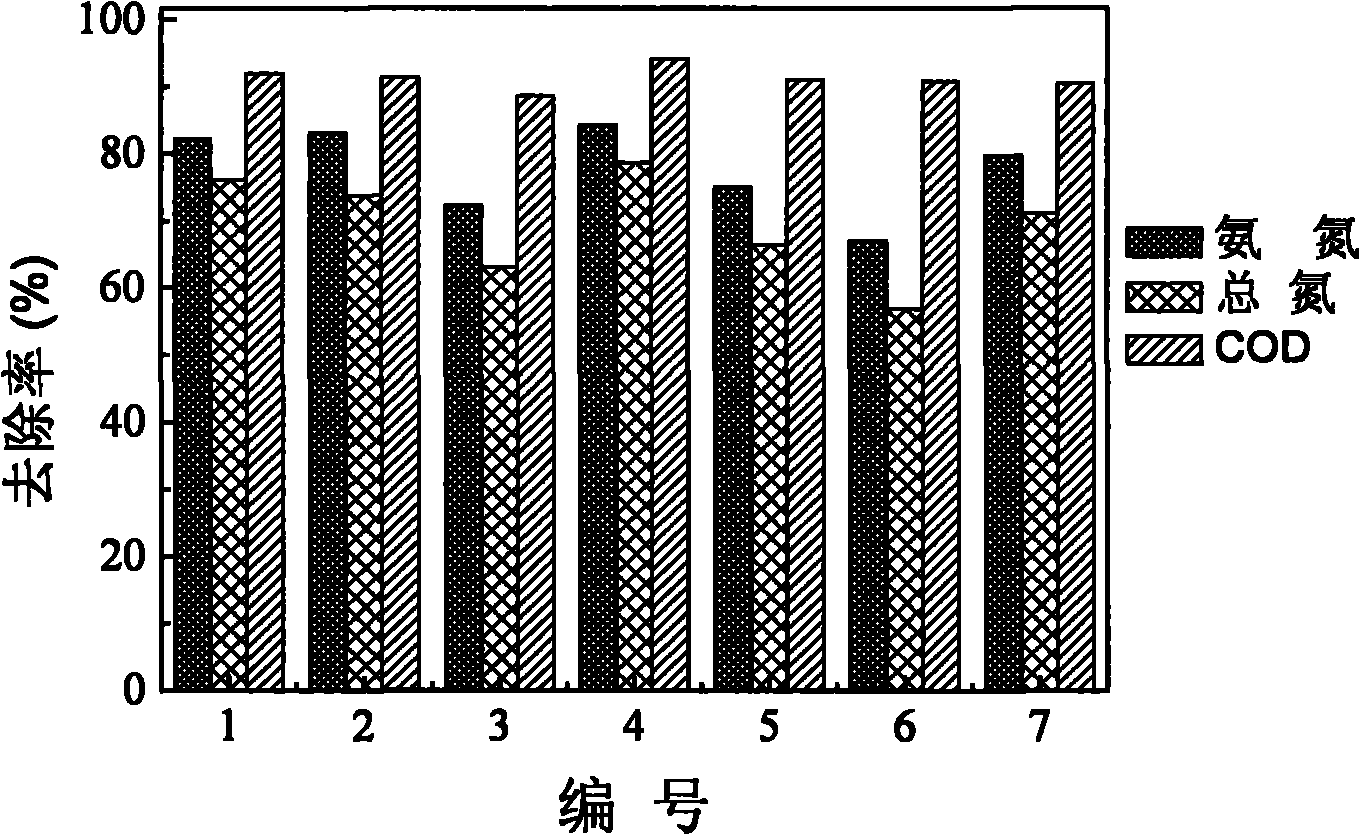Method for removing carbon and nitrogen pollutants in waste water in one step
A pollutant, carbon and nitrogen technology, applied in the field of water treatment, can solve the problems of separate nitrification and denitrification reactions, slow proliferation of nitrifying bacteria, etc., to achieve the effect of reducing reactor settings and simplifying operating procedures
- Summary
- Abstract
- Description
- Claims
- Application Information
AI Technical Summary
Problems solved by technology
Method used
Image
Examples
Embodiment 1
[0089] In this example, the mixed sludge of Agrobacterium and activated sludge with different proportions was used to treat simulated high-ammonia-nitrogen wastewater.
[0090] Add 90mL simulated high ammonia nitrogen wastewater into a 250mL Erlenmeyer flask, and the total inoculum volume of mixed sludge is 10mL. The inoculum amount of Agrobacterium in the mixed sludge was controlled at 0%, 20%, 40%, 60%, 80% and 100%, respectively, where the inoculum amount was defined as the ratio of the added bacteria to the total amount of the mixed sludge.
[0091] Cultivate in a shaker at 30°C and 150rpm, take samples at different times, and analyze the changes of COD, ammonia nitrogen and total nitrogen in the wastewater. After 24 hours of incubation on a shaking table, the treatment results under various bacterial dosages are shown in Table 3. It can be seen from Table 3 that when the bacterial dosage is 0%, that is, when the activated sludge is completely added, the COD of the system...
Embodiment 2
[0095] In this example, a mixture of Agrobacterium, Comamonas testosteroni and Achromobacter xylosoxidans in different ratios was used to treat simulated high-ammonia nitrogen wastewater. The matching scheme among the three kinds of bacteria is shown in Table 4. At 30°C, the experiment on the degradation effect of mixed bacteria was carried out in a shaker at 150 rpm, and the experiment period was 30 hours. Samples were taken at regular intervals to analyze the changes in the concentration of nitrogen and COD in the simulated wastewater. The results are shown in figure 2 shown. It can be seen that the specific gravity of the three bacteria is different, and the treatment effect is significantly different. When the proportion of the three is 1:1:1, the removal of ammonia nitrogen, total nitrogen and COD is higher. It shows that after the three kinds of bacteria are mixed in this ratio, the synergistic effect is maximized. In addition, the nitrogen and COD removal ability o...
Embodiment 3
[0100] In this embodiment, a simulated SBR device is used to treat domestic sewage in Langfang Economic Development Zone (see Table 1). A 500mL graduated cylinder is used as a reactor, and an aeration pump is connected to a sand core aeration head to feed air.
[0101] During the test, 250mL of domestic sewage was added to the reactor, and 100mL of mixed sludge was inoculated. The mixed sludge is made by mixing activated sludge with high-efficiency bacteria liquid; the high-efficiency bacteria are mixed by the bacterial suspension of Agrobacterium, Comamonas testosteroni and Achromobacter xylosoxidans in a volume ratio of 1:1:1; The amount of high-efficiency bacteria in the mixed sludge is controlled at 30%, and the definition of the amount of bacteria is the ratio of the added high-efficiency bacteria to the total amount of mixed sludge.
[0102] At 30°C, the aeration rate was controlled at 400mL / min, and samples were taken at different times to analyze the changes in COD, a...
PUM
| Property | Measurement | Unit |
|---|---|---|
| clearance rate | aaaaa | aaaaa |
Abstract
Description
Claims
Application Information
 Login to View More
Login to View More - R&D
- Intellectual Property
- Life Sciences
- Materials
- Tech Scout
- Unparalleled Data Quality
- Higher Quality Content
- 60% Fewer Hallucinations
Browse by: Latest US Patents, China's latest patents, Technical Efficacy Thesaurus, Application Domain, Technology Topic, Popular Technical Reports.
© 2025 PatSnap. All rights reserved.Legal|Privacy policy|Modern Slavery Act Transparency Statement|Sitemap|About US| Contact US: help@patsnap.com



